As I write this, I'm waiting for our students to return from their weXplore, a five-day excursion that takes students beyond their host city for immersive cultural experiences. For the past two months, we as a school have called Maun, Botswana, our home. It's a small town on the edge of the Okavango Delta and, for many travelers, a doorway into Africa. But Maun is only one perspective, and it...
Read MoreWhere and how do you learn? How do you develop a passion for curiosity? How do you keep your mind open to new people, ideas, and possibilities? These are all questions being faced by educators and students as our world gains a more global context.
For a rare few who are lucky enough to have talented and equally curious teachers, this might happen in the confines of the classroom. But this is rare – very rare. Classrooms are tied to routines, bell schedules, and rote learning, and the only glimpses into the real world often come from glances out of the classroom window.
It doesn’t need to be this way: Every school is surrounded by vibrant communities and environments that offer ample opportunities for active learning — learning where students learn “by doing” rather than by engaging in classroom discussions.
This is place-based learning.
Place-based learning “immerses students in local heritage, culture, ecology, landscapes, opportunities, and experiences as a foundation for the study of language arts, mathematics, social studies, science, and other subjects.” (Place-Based Education Collaborative)
It has become clear that a one-size-fits-all approach to education does not work for students or teachers. No one should be bored or dread going to school. Students deserve to be engaged with their learning, and this requires providing them the opportunity to learn and explore in ways that fit their personalities and pace.
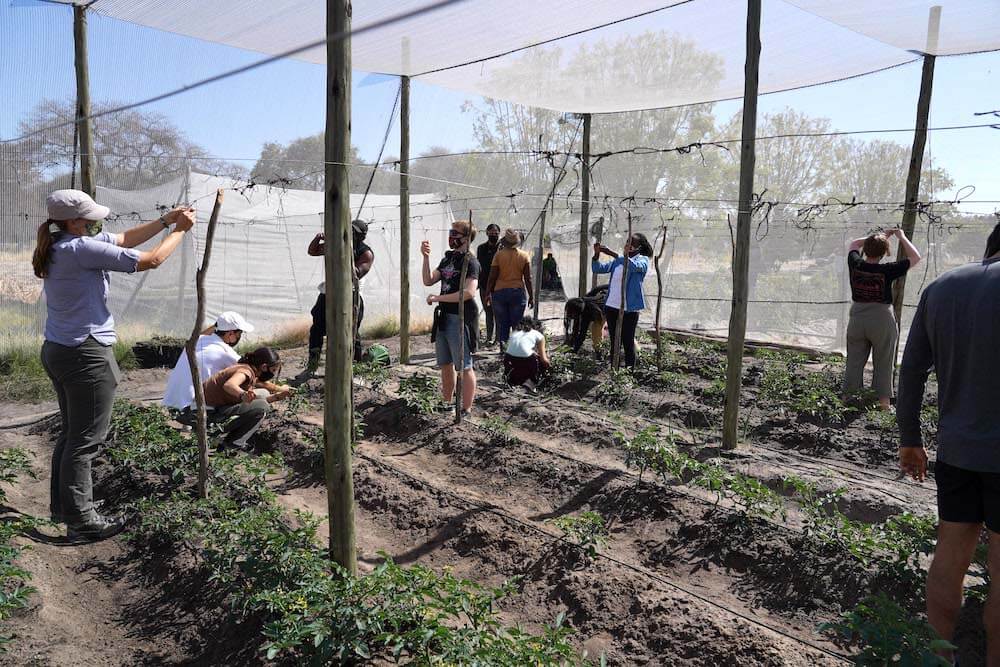
THINK Global School students help construct a farm in Botswana
It also doesn’t need to be complicated. It can be as simple as a Grade 3 science class being paid a visit by a local Master Naturalist. Through the visit, students learn from the enthusiastic expert how to plant flowers and vegetables, take care of plants organically, and ask informed questions that pique their interest and build their knowledge base. Hands-on experiences like these stick with students and lead to more advanced art, science, and health projects further down the road.
Another benefit of place-based learning is that it provides students a sense of place within their community and helps them discover how their actions make a tangible difference to others.
Students enrolled in media studies design, layout, write, publish, and deliver a community newspaper. These students are out in the community learning firsthand about the issues and concerns faced by its inhabitants. They have a chance to talk, listen, and connect with the people they see on the street, in turn building a real sense of purpose. This place-based learning project gives students hands-on, real-world experience with research, creativity, project management, budgeting, and leadership.
Place-based learning is also not new. For years, classroom field trips, guest speakers, and study abroad programs have all been around. All three share a common thread of offering real-world experiences and, sadly, being a rarer occurrence than they should be. Rather than being a mainstay of the curriculum, they are something students can look forward to once a semester, or in the case of studying abroad, possibly once-in-a-lifetime.
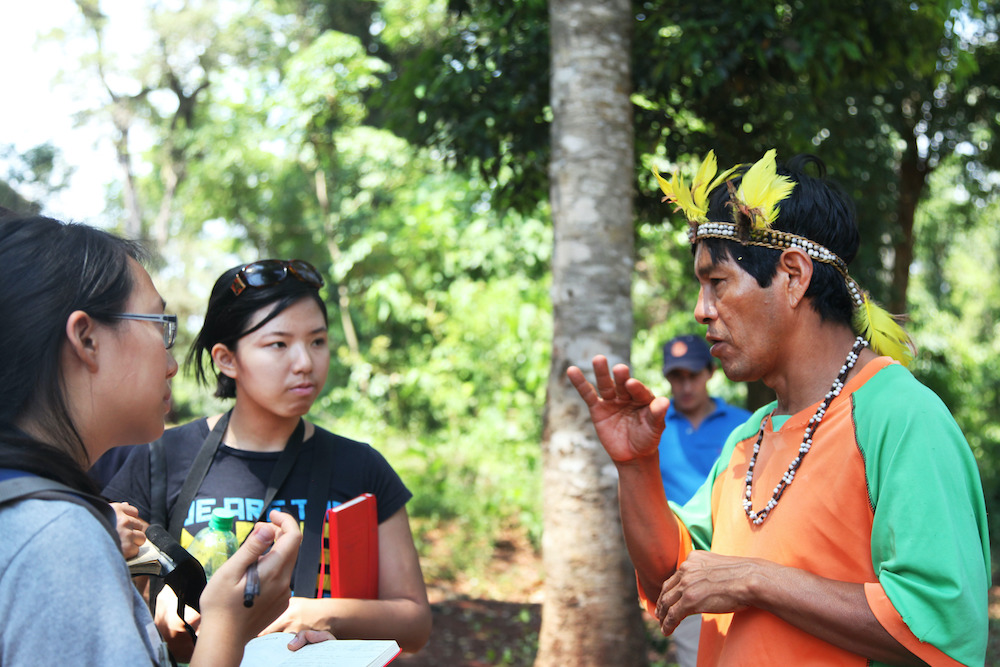
TGS students Yada and Charis converse with a Guarani shaman in Argentina
At THINK Global School, place-based learning is a cornerstone of our Changemaker Curriculum, and all of our in-country projects are tied to interactions with the local community. Students explore the social, environmental, economic, and cultural factors that impact the people who call the places we visit home. And while our students might travel the world during their three years at THINK Global School, we firmly believe that place-based learning can be practiced at any school and at all grade levels.
Keep reading to learn more about place-based learning and why all schools should be incorporating it into their lesson plans.
What Is Place-Based Learning?
Place-based learning connects students to their communities and the world by giving them experiential, real-world, hands-on learning opportunities. Place-based learning takes advantage of geography, people, and culture to create and deliver personalized learning.
The Center for Place-Based Learning and Community Engagement defines place-based learning or place-based education as a learning experience that:
Places students in local heritage, culture, landscapes, opportunities and experiences, and uses these as a foundation for the study of languages arts, mathematics, social studies, science, and other subjects across the curriculum.
Even more specifically, place-based learning is “anytime, anywhere learning that leverages the power of place, and not just the power of technology, to personalize learning.”
Place-based learning bridges gaps, giving context and deeper meaning to projects, service learning, and personalized-learning. This can literally happen in your backyard, 100 miles away, or on the other side of the world while immersed in a foreign community. There are no limits on what place-based learning is or how and where it happens.
Why Is Place-Based Learning Important?
Place-based learning is important because it gives students a connection to where they are and supports relationships within local and global communities. This type of learning is critical if we want to develop citizens who have a vested interest in their community and the wellbeing of others.
When place-based learning puts a strong emphasis on service-learning and project-based learning, students develop perspective. The philosophy of walking a mile in someone else’s shoes before judging resonates deeply with place-based learning. An example of this can be found below from Class of 2017 Graduate Samtag Prakke, who experienced a career shift after visiting Srebrenica, the site of the worst massacre during the Bosnian Conflict.
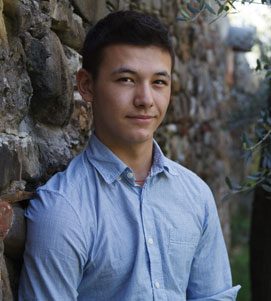
I was really affected by what I learned during THINK Global School’s visit to Srebrenica. I realized afterwards how one-sided that conflict was, and how I can’t blame one person; however, now I’ve looked into going into an international law degree, and I want to be able to change injustices like that.
-Class of 2017 Graduate Samtag Prakke
How better to realize the real-world applications of science, math, language, history, health, and social sciences than out in the world? Here are three examples of how we’ve incorporated place-based learning into THINK Global School’s Changemaker Curriculum.
- During our 2021-22 school year, students had the opportunity to learn firsthand about emerging technologies, sustainable living in the desert, and Emirati culture during the Expo 2020 World’s Fair, which took place in Dubai and featured 191 country pavilions.
- During a term in Greece, students set sail to recreate Homer’s Odyssey, retracing Odysseus’ footsteps through visits to a variety of islands and the Melissani Cave.
- During the CM1 Reconciliation module in Bosnia & Herzegovina, students witnessed starkly different perspectives by hearing firsthand from Bosniak, Serb, and Croat survivors and by visiting religious sites central to BiH’s three main ethnic groups. Students also visited the city of Srebrenica, the site of the conflict’s worst massacre, and Mostar, a city that remains divided along ethnic lines.
How Does Place-Based Learning Work?
Place-based learning works because it is not bound by the traditional norms and structures of classroom-based learning. Students have greater freedom and access to education and can discover how they learn best.
One way that place-based learning is similar to traditional learning is that it requires careful planning ahead of time. Context is key: make sure that when planning your experiences, they align with the lessons of the day. Experiences for the sake of having experiences waste valuable time and don’t help to inform students, but those that are well thought out will lead to meaningful conversations the day of and down the road.
So how to plan? Start by looking at the opportunities available in your local community. What local experts exist? It could be as simple as having parents come into your classroom to talk about their own professional expertise or calling upon a community member to delve deeper into a subject like history or science. Opportunities abound and you’d be surprised how willing people are to share with the local community. Reach out to local museums, environmental centers, and small businesses, and that’s just a starting point.
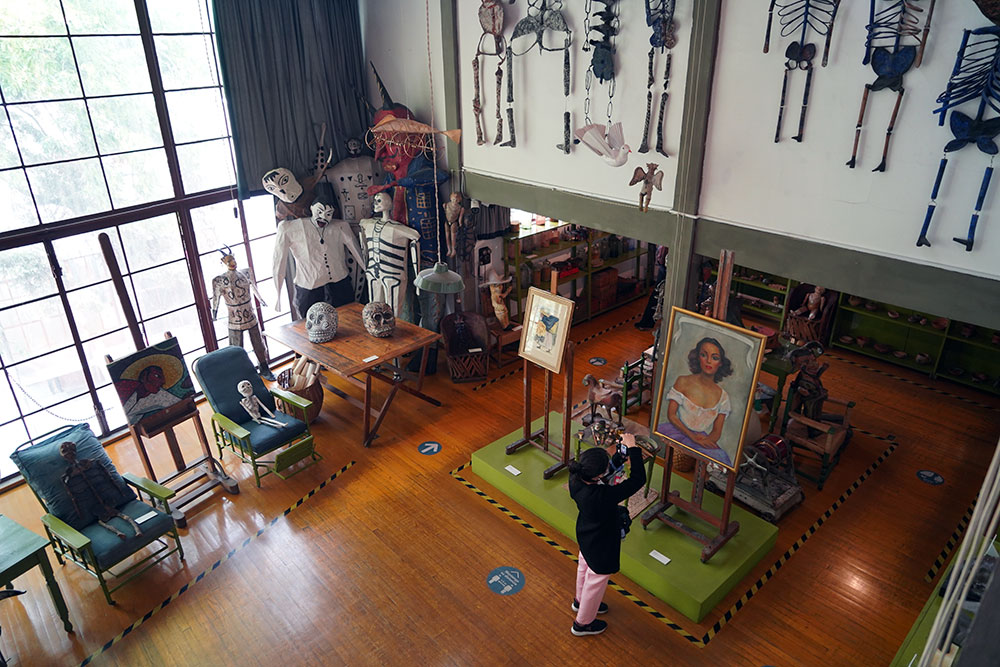
Students at THINK Global School explore Diego Rivera’s workshop in Mexico City
The other way to approach it is to determine a community need. This often incorporates aspects of service learning, like planting a school garden or visiting a food pantry so students can learn firsthand about what those suffering are going through, developing empathy in the process. By addressing community needs, students will gain a sense of purpose and deepen their sense of belonging – both traits that can be lacking as students progress through upper grades.
Also integral to upper grades is exposing them to career opportunities through visits to businesses and through conversations with experts in a wide range of fields. We’ve found at THINK Global School that these conversations in particular resonate with students and open their eyes to career fields that they might not have considered.
When Does Place-Based Learning Happen?
The strength of place-based learning lies in how it can happen throughout the education system. From kindergarten through to university, place-based learning serves a valuable purpose as it can happen anytime, anywhere. Here are three areas where place-based learning are commonly used within schools.
Within the School Mission
Some schools, such as Teton Science Schools and THINK Global School, incorporate place-based learning into their mission and integrate time within the local community into all aspects of the curriculum.
At Teton Science Schools, students are working to improve the environment around their school by uncovering trails, clearing the forest of invasive plants, and caring for chickens and beehives.
Here at THINK Global School, students live and learn in four countries each year, making meaningful connections with the communities around them. Each term, students select from one of three country-specific projects to work on during their time onsite. Throughout the project, they explore their surroundings, interact with locals, and receive mentorship from local experts in a variety of fields.
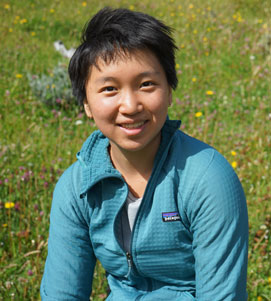
Traveling to dozens of countries and living in each of them taught me a lot. I’m aware of conservation issues in Botswana, geometric patterns in Indian architecture, Japan’s cultural uniqueness, ethnic conflict in the Basque Country…the list goes on and on. But what has most strongly stuck with me after years of traveling isn’t all this knowledge, but rather a natural empathy towards others, whoever they might be.
-Class of 2020 Graduate Soeun Kim
Through Project-Based Learning
Project-based learning engages students in an iterative process of investigation, creation, sharing, and reflection – allowing students to draw on their strengths in arriving at a project conclusion. Project-based learning can include group work that teaches students collaboration, delegation, and teamwork skills. At its core, project-based learning helps students make connections between ideas and themselves.
Project-based learning often incorporates place-based learning into its project modules, allowing students to connect their education firsthand with the local community. In project-based learning, students of all ages are assigned a driving question and provided the freedom to approach it however they like with the mentoring of a project advisor. These multidisciplinary projects often occur within the community and rely on local experts to inform student learning.
For example, at the Communities Program at Oshkosh North in Wisconsin, students take their projects outside of the classroom, grounding them in the community.
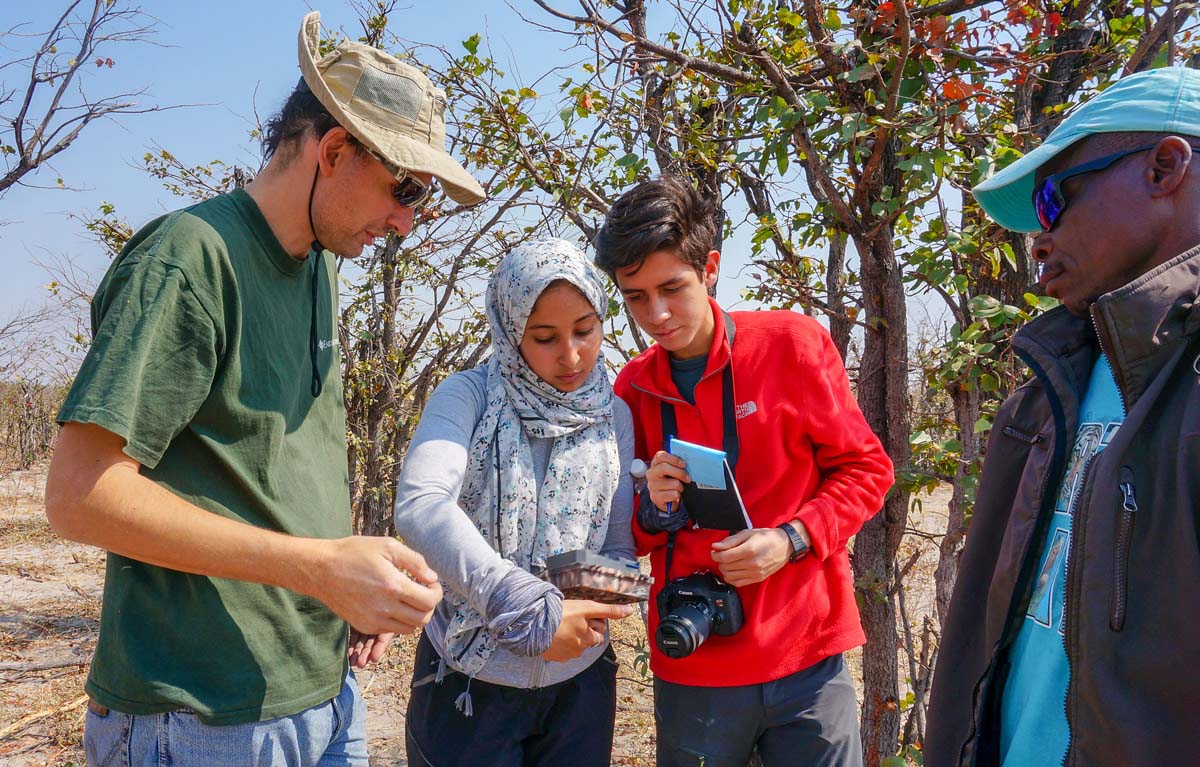
Students inspect a transect during their conservation studies in Botswana
Last year, at THINK Global School, our CM1 students participated in an eight-week multidisciplinary Conservation & Storytelling module in Botswana, where they examined contested environmental issues from different perspectives. The module included a week-long conservation study led by local experts and opportunities to learn about the importance and power of storytelling customs in Botswana.
Project Spotlight
THINK Global School Class of 2020 student Soeun K. spent time learning about cognition, behavior, and data collection alongside filmmaking techniques for her mastery project, Ecology of the Mind, which explored Korean Buddhism.
A resident of South Korea, Soeun traveled from her home in Seoul to a remote Mihwangsa temple in Haenam, where she interviewed a Buddhist monk on life and his philosophies. Soeun also worked with expert documentarians back in Seoul to inform her studies and ensure that she utilized best practices. You can watch Soeun’s final video above.
During Service Learning
Service learning combines beneficial community service with learning objectives, teaching students the importance and value of civic responsibility and community. For some schools, such as ours, service learning is integral to our place-based learning curriculum – as it helps instill a sense of belonging and purpose that aren’t always apparent in academic work.
For example, many high schools encourage students to complete volunteer hours during their senior years. This volunteer experience gives students the chance to explore potential career interests while showing them the value of community involvement and spirit.
At THINK Global, our service-learning program is driven by a student-community partnership in which students identify real needs and work with one another and community leaders to address them actively.
Here are two examples of our service-learning projects in Panama:
Fundacion Sembarte

Students painting a mural at Fundación Sembrarte
Ten CM2 students chose to work with Fundación Sembrarte, which focuses on bringing art to marginalized communities through public installations, as part of their service-learning program. Students participated in several small projects, from painting murals to planting gardens, all part of the foundation’s efforts to beautify the fishing neighborhood of Boca la Caja, one of the last areas along Panama City’s waterfront resisting gentrification. By working with local residents, Sembrarte and participating students raised the community’s spirits about Boca la Caja’s value, hopefully thereby reducing gang activity.
Avifauna

Students at the Rainforest Discovery Center helping rebuild paths through the jungle
Other CM2 students elected to work with the Rainforest Discovery Center, an ecotourism and environmental project and nature site nestled inside of Soberanía National Park. The Rainforest Discovery Center is popular with birdwatchers from across the world and features a 34-meter/104-foot observation tower that provides incredible opportunities to spot toucans, trogons, hawks, and tanagers from overhead. Participating students helped by rebuilding paths through the jungle, in turn aiding in attracting tourists to the center by providing safer, more accessible walkways.
To summarize when place-based learning happens, you just need to know that the opportunities are endless –- it comes down to imagination and opportunity. For more examples of when place-based learning happens, download this Getting Smart presentation: What is Place-Based Education and Why Does it Matter?
Where Does Place-Based Learning Fit?
Because place-based learning can happen anywhere and at any time including museums, community parks, the school playground, local and global field trips, via speakers in the classroom –essentially anywhere in the community– place-based learning always fits.
There are no limits or rules on where place-based learning can take place:
- In an urban school that has partnerships with a community garden organization
- In a rural school that organizes field trips to nearby city museums and arts festivals
- Community-school partnerships that enable students to spend time on a volunteer project
- Community parks and outdoor organizations that engage students in outdoor learning
- Colleges and university programs that give students real-world hands-on learning opportunities, in education, health, STEM, history, journalism, and more.
- International experiences such as a year-abroad, studying on a ship, or attending a traveling school
Conclusion
This quote from Getting Smart sums up how we think about and see place-based learning working in the local and global community:
“…adding Place-Based Education to the global education discourse will offer a new entry point into high-impact, personalized learning for all students, teachers, and communities.”
We are excited about the research, innovation, and opportunity that is available for and within place-based learning. We hope this article has shown that place-based learning can take place at any school, and that its benefits to students, educators, and the local community are limitless.
Apply to THINK Global School Today
Know a child who would excel in a place-based educational environment? Apply to THINK Global School today.